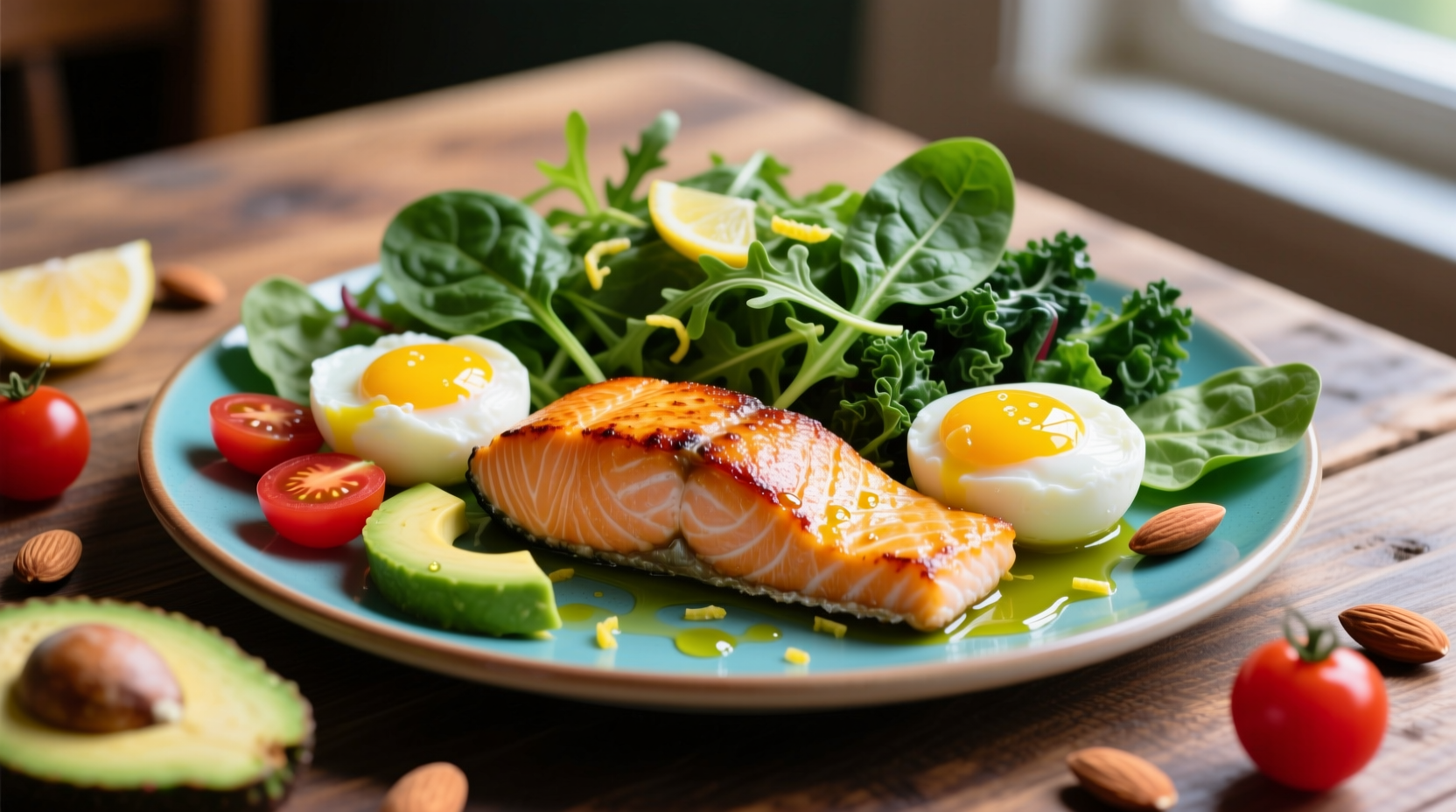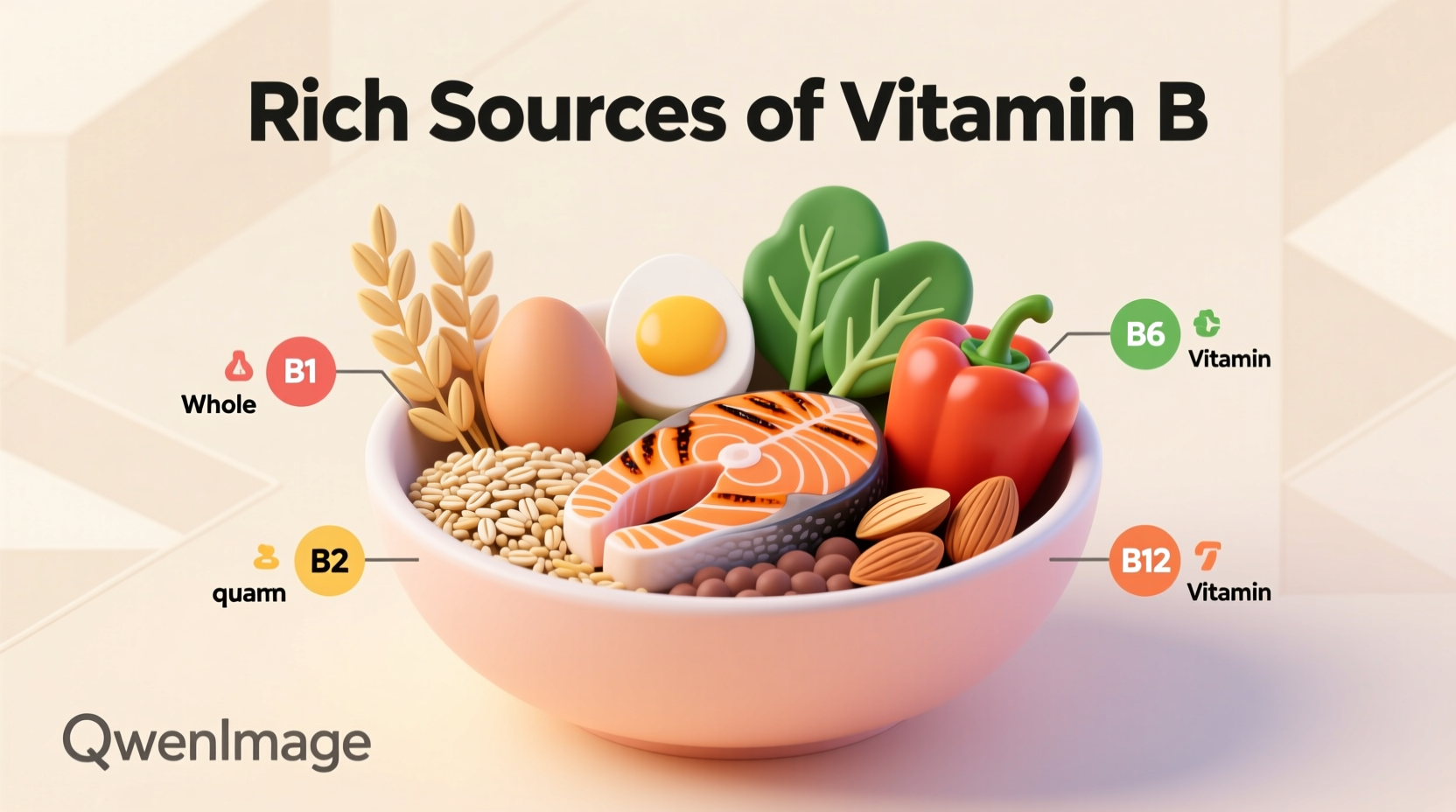Discover exactly which foods deliver maximum vitamin B benefits and how to incorporate them into your daily meals for optimal health. This guide cuts through the confusion with science-backed recommendations you can trust.
Why Vitamin B Matters More Than You Think
Vitamin B isn't just one nutrient—it's a complex of eight essential compounds that work together to convert food into energy, maintain healthy skin and hair, support brain function, and create red blood cells. According to the National Institutes of Health Office of Dietary Supplements, inadequate B vitamin intake affects millions worldwide, often without noticeable symptoms until deficiencies become severe.
Your Complete Vitamin B Food Guide
Each B vitamin serves unique functions and appears in different food sources. Understanding these distinctions helps you build a nutritionally complete diet.
Vitamin B12 Powerhouses
B12 deficiency affects up to 15% of adults over 60 according to CDC research. This critical nutrient only appears naturally in animal products:
- Liver (3 oz provides 1,000%+ of daily value)
- Sockeye salmon (70% DV per 3 oz)
- Trout (64% DV per 3 oz)
- Fortified nutritional yeast (100% DV per tablespoon)

B6 Essentials for Brain Health
Vitamin B6 supports neurotransmitter production. The USDA FoodData Central identifies these top sources:
- Chickpeas (55% DV per cup)
- Tuna (48% DV per 3 oz)
- Beef (47% DV per 3 oz)
- Bananas (25% DV per medium fruit)
Vitamin B Food Comparison Table
| Food | B12 (mcg) | B6 (mg) | Folate (mcg) | Niacin (mg) |
|---|---|---|---|---|
| Liver (3 oz) | 70.7 | 0.9 | 215 | 14.7 |
| Nutritional yeast (1 tbsp) | 2.4 | 0.1 | 24 | 4.7 |
| Salmon (3 oz) | 4.9 | 0.6 | 8 | 8.4 |
| Chickpeas (1 cup) | 0 | 1.1 | 282 | 2.9 |
Practical Vitamin B Meal Planning
Maximize your vitamin B intake with these evidence-based strategies:
Breakfast Boosters
Add two tablespoons of nutritional yeast to your morning eggs (providing 100% of your daily B12 needs). Pair with spinach (rich in folate) and sunflower seeds (packed with B5) for a complete B vitamin profile.
Lunch Solutions
Create a salmon and chickpea salad—this combination delivers B12, B6, and folate simultaneously. The National Library of Medicine confirms that combining animal and plant-based sources enhances overall B vitamin absorption.
Dinner Decisions
Choose grass-fed beef liver once weekly (just 3 ounces meets your monthly B12 requirement). For vegetarians, fortified nutritional yeast makes an excellent cheese substitute in pasta dishes, providing complete B12 coverage.
Special Considerations for Optimal Absorption
Vitamin B absorption depends on several factors you can control:
- Cooking method: Steam vegetables instead of boiling to preserve water-soluble B vitamins
- Food combinations: Pair vitamin C-rich foods with folate sources to enhance absorption
- Timing: Consume B vitamins throughout the day rather than in one large dose
- Storage: Keep grains in airtight containers to prevent B vitamin degradation
Vitamin B Needs Across Life Stages
Your requirements change throughout life. Pregnant women need 600 mcg of folate daily according to the CDC, while adults over 50 often require supplemental B12 due to decreased stomach acid production. Athletes benefit from increased B6 intake for protein metabolism.











 浙公网安备
33010002000092号
浙公网安备
33010002000092号 浙B2-20120091-4
浙B2-20120091-4